Liberation Day, coming up on April 25, celebrates Italy’s liberation from both the Fascist regime of Mussolini and the Nazi occupation.
A fitting place to go on this day is Sant’ Anna di Stazzema in Tuscany. This small mountain village is in the province of Lucca and can be reached by backroads from Lucca but is most directly reached from the Versilia Coast.
Sant’Anna di Stazzema is a place of profound remembrance.
On an August morning in 1944, German troops entered the village and committed what is probably the worst war crime on Italian soil, executing all people present that day, then killing the animals and burning the village.
I first heard of this massacre when I was on my pilgrimage, staying a night in the Tuscan town of Pontremoli. While discussing Tuscan aspects of World War II history with the young B&B owner, she told me about it.
Eight years later, I visited Sant’ Anna on Liberation Day when I was living in Lucca.
The road up to the village is long and steep with tight curves—it appears to be one-lane, but no, it’s two.
As you drive higher and higher, you’ll see (if you’re not the driver) magnificent views of the plains of Versilia—the long beaches of Viareggio and the sea far below.
At the entrance to the village a sign proclaims the hamlet a National Park of Peace.
Outside the little church, note the plaque to Don Innocenzo Lazzeri, the 33-year-old priest who pleaded with the Germans not to kill the villagers.
His pleas were in vain. He was shot in front of the church. Apparently, his father had told him to hide and he had replied,
“No father, I cannot hide, I cannot abandon the population in this situation. Duty requires me to present myself.”
Inside the church, across an expanse of wall, are photographs of the victims, including over a hundred children and eight pregnant women.
The able-bodied adult men of the village were hiding further in the mountains, while the women, children, and elderly believed themselves to be safe in the village. Yet they were rounded up, all 560 of them, and systematically executed.

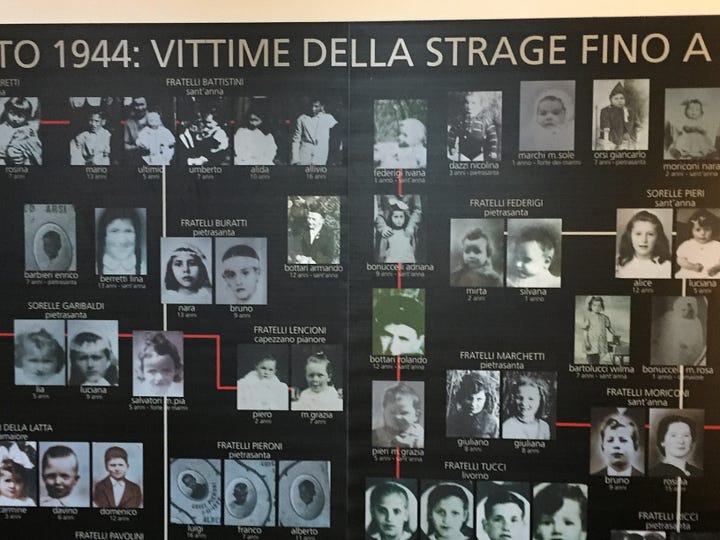
Sant’Anna di Stazzema was the worst hit by the scorched earth policy the Germans adopted in Tuscany, which involved a cruel disregard for civilian lives as they systematically destroyed towns and infrastructure, attempting to deny benefits to the advancing Allies.
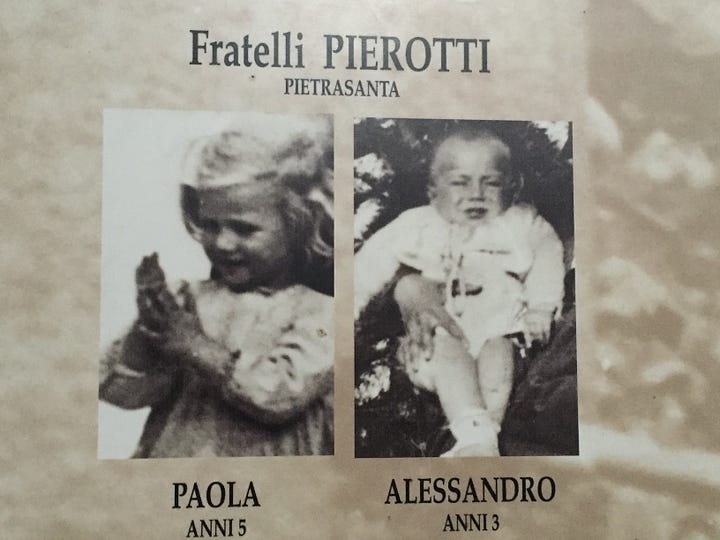
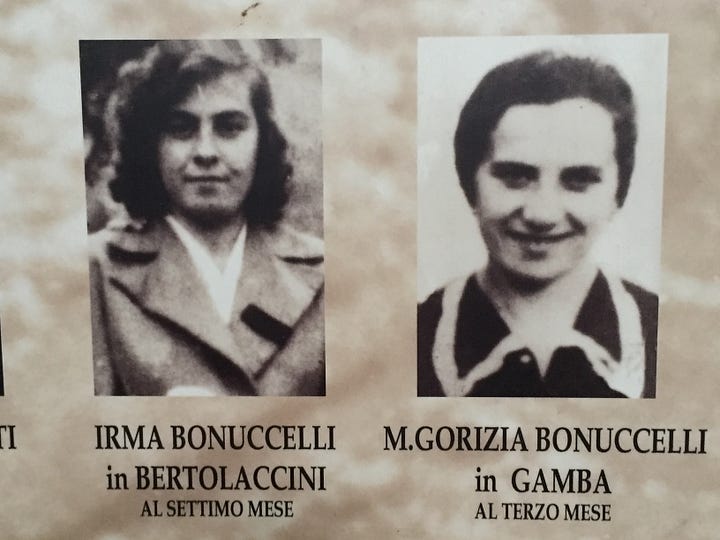
One little boy named Enrico survived after his family was massacred in front of him because in the chaos, a girl from another family dragged him into a cupboard.
The museum is housed in what was the village school. It is a well laid out space with a video summarizing the history leading up to the massacre. There are hundreds of images from the time, including one of the Buffalo Soldiers—a nickname given to the African American soldiers who were a segregated unit that served in the Italian Campaign from 1944 to the war’s end.
In the museum you’ll learn about the long, fruitless effort for justice to be served.
Gerhard Sommer, second lieutenant of the 16th SS Division, became a “most wanted Nazi criminal” for the mass murder of the civilians of Sant’ Anna.
In 2005, an Italian military court sentenced him to life imprisonment for these crimes. In fact, the court found the ten members of the division responsible for the massacre and sentenced them to life in prison in absentia.
The Germans dragged the process on for ten years, and in 2012, when only eight of the former Nazis were left alive, proclaimed “insufficient evidence” as a reason to drop the case. This provoked outrage in Italy.
Gabriele Heinecken, a lawyer in Hamburg, then went to a higher regional court to force criminal prosecution. She accused the state prosecutors of delaying the proceedings, to the benefit of Sommer, 93 years old. She was successful, but justice was not ultimately served.
In 2014, a court in Karlsruhe overturned the decision in the case of Sommer, citing his clear involvement in the mass killing of civilians, but Hamburg prosecutors took on the case, and said Sommer's advanced state of dementia meant he could not address the court. He died in 2017 after having lived a life free of punishment for his crimes.
In 2023, the European Union awarded the village the European Heritage Label. The European Heritage Label recognized seven new European sites that played a pivotal role in shaping Europe’s shared history.
Please visit Sant’Anna di Stazzema, take your family and friends, and never forget what fascism leads to.
It’s the perfect place to visit on Liberation Day, but please go whenever you are in Tuscany.
If only the population of my fellow Americans who don’t seem concerned about trends toward fascism had exposure to places like Sant’ Anna di Stazzema! No one but a sociopath could go here and spend time reading and absorbing the information and not be profoundly affected.
The museum is open every day of the week except Monday.
For further reading, I recommend this story about a German man who realized his uncle had been involved in the massacre. He read about Enrico, the little boy who’d survived and reached out to him.


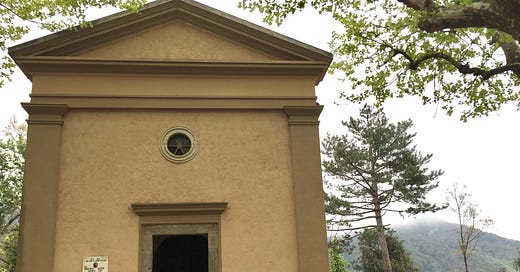



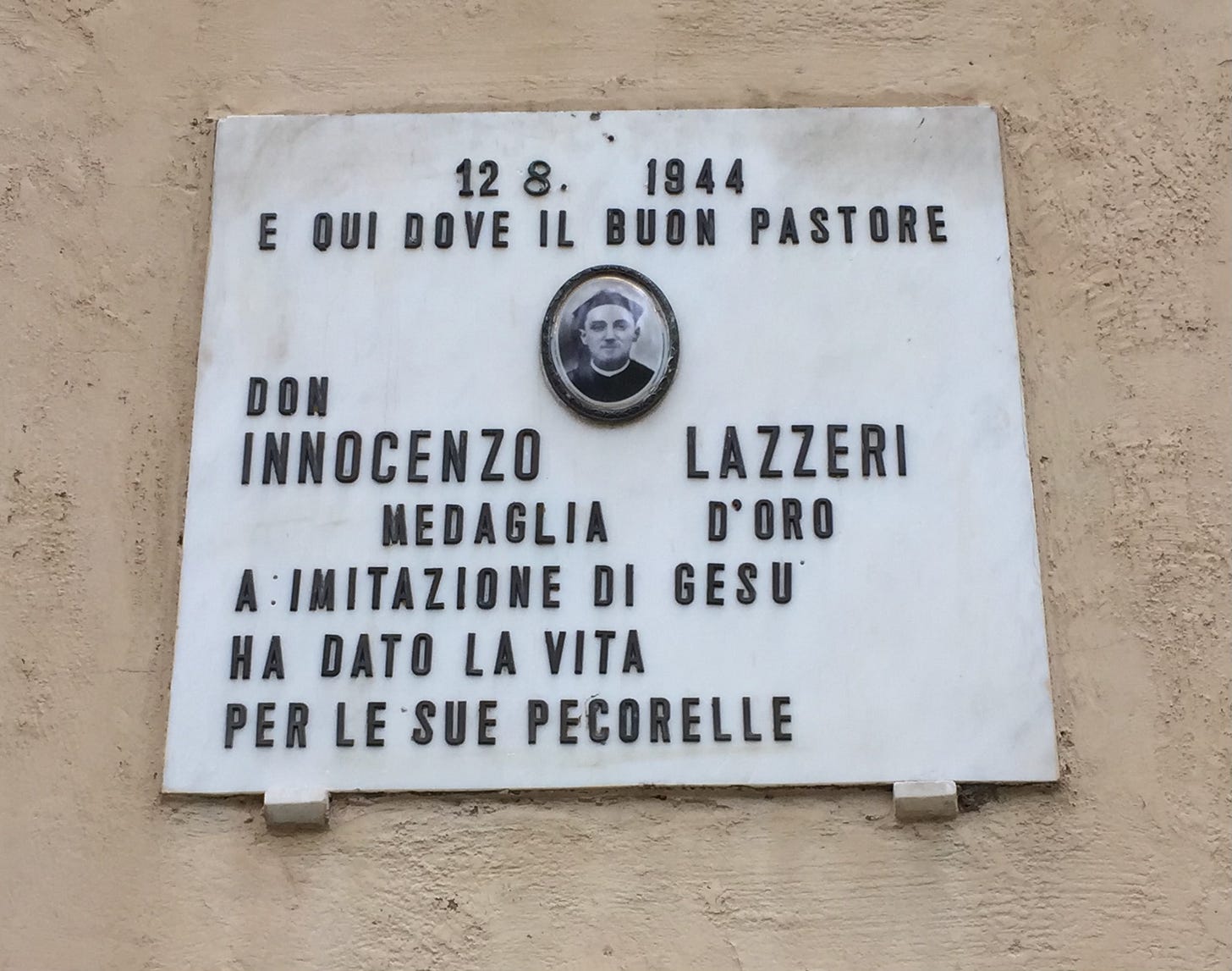
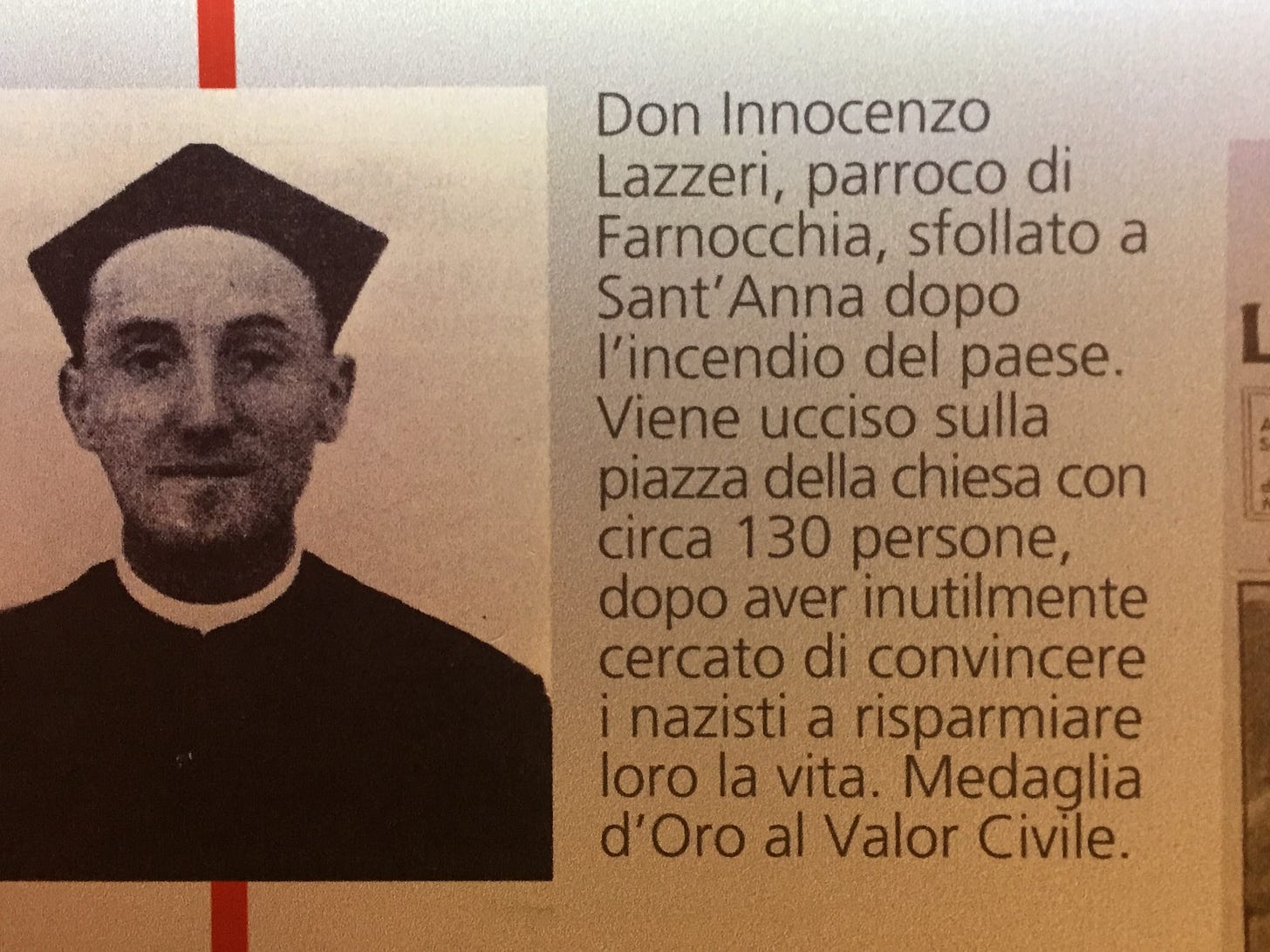
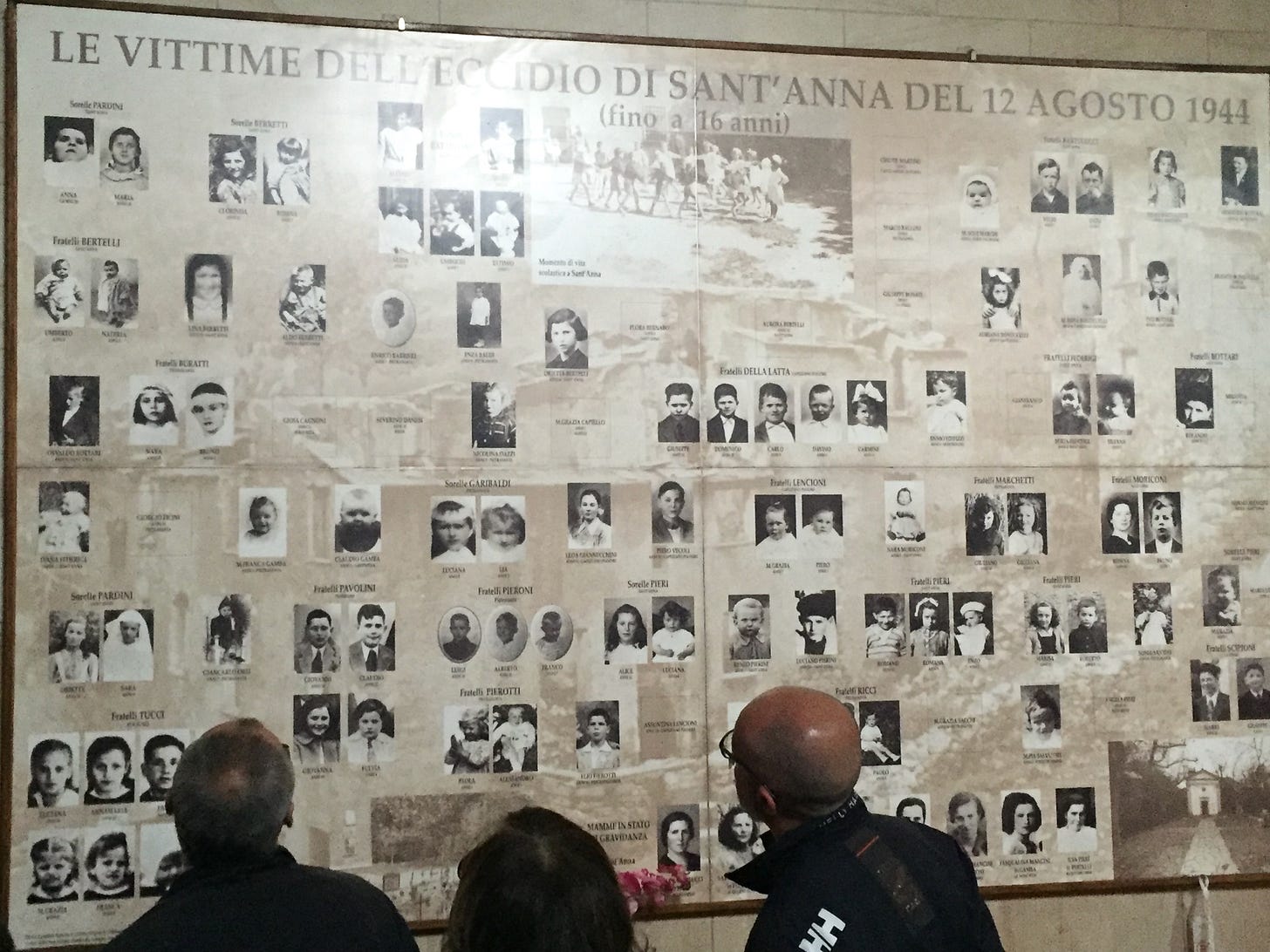
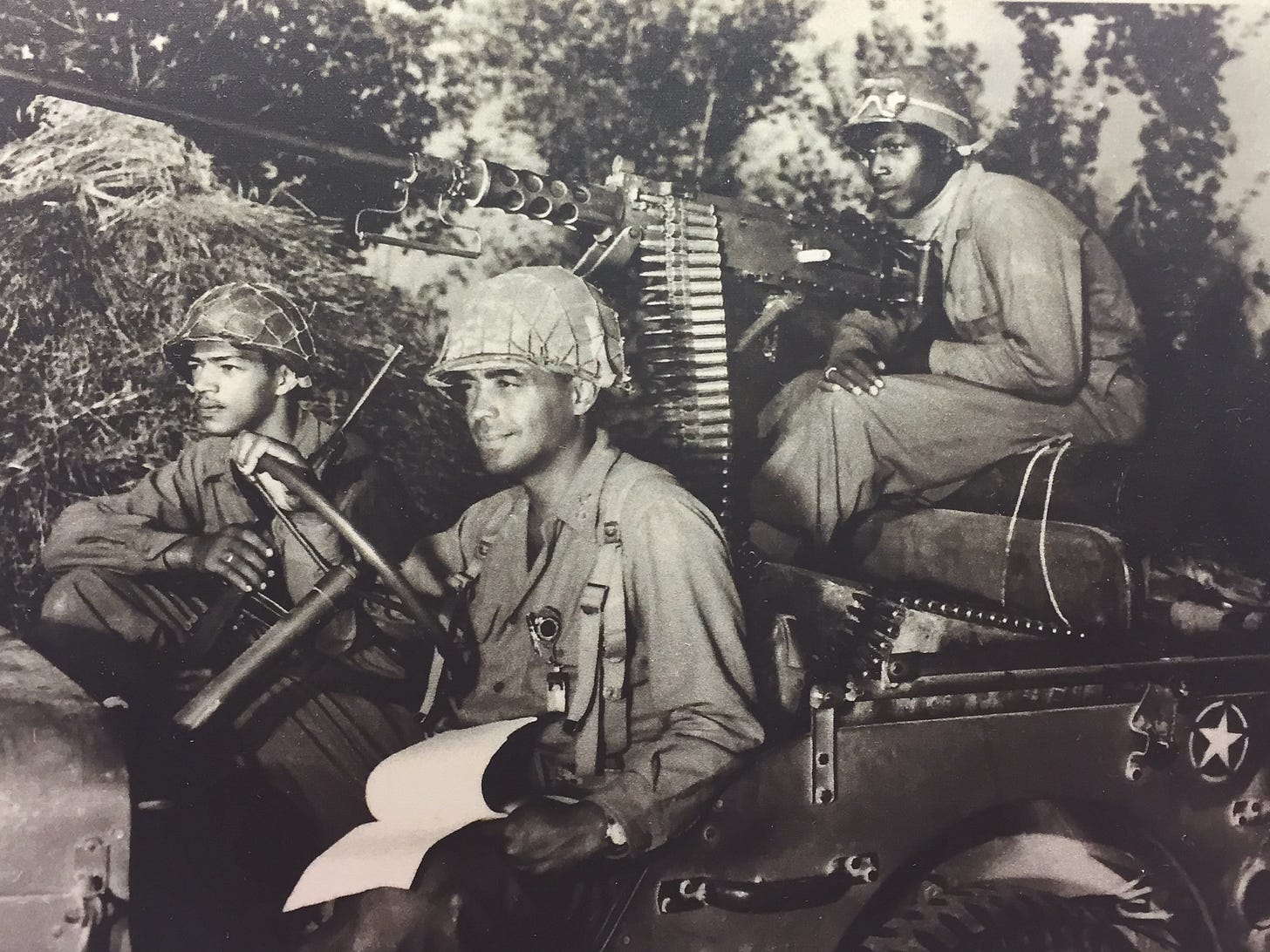
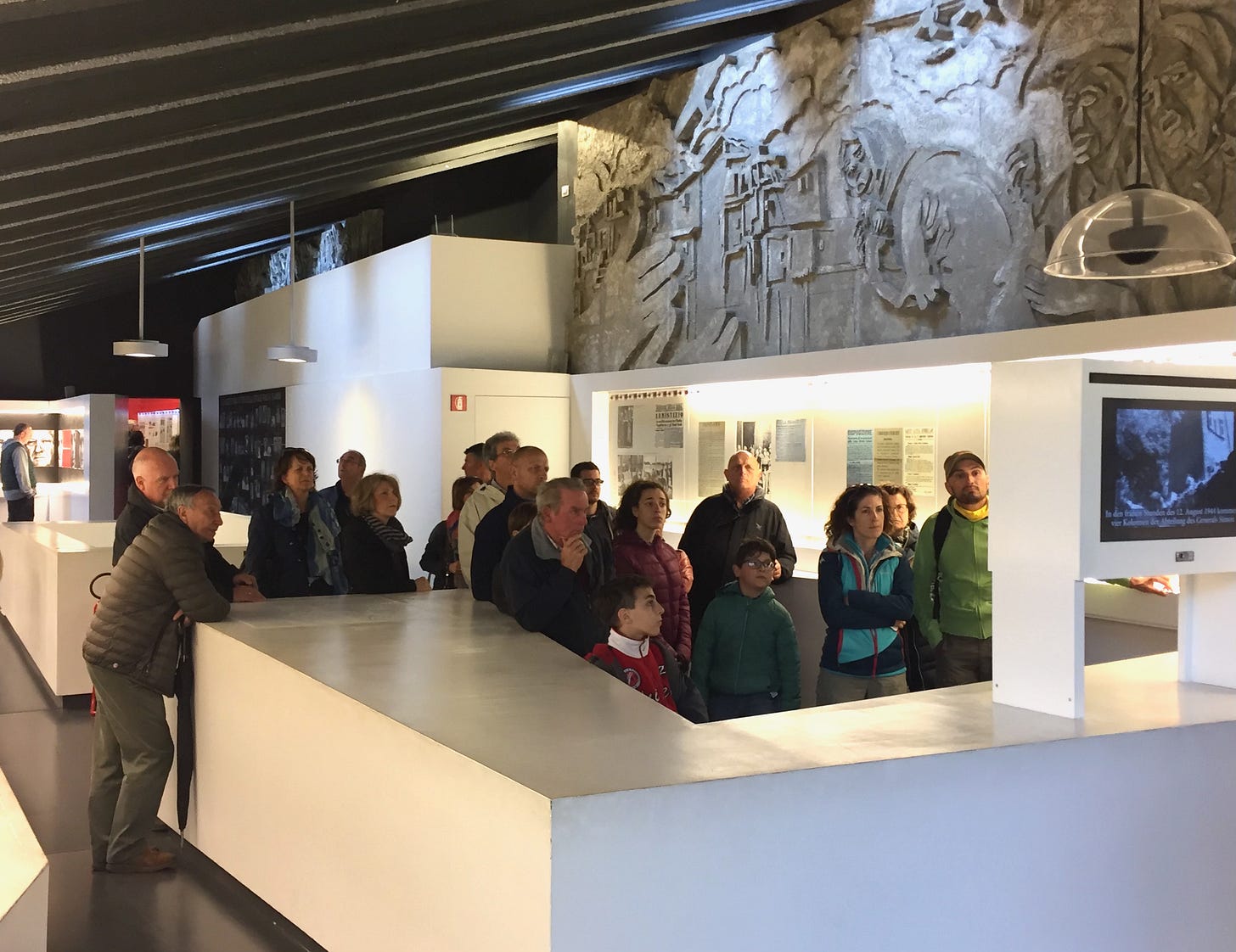
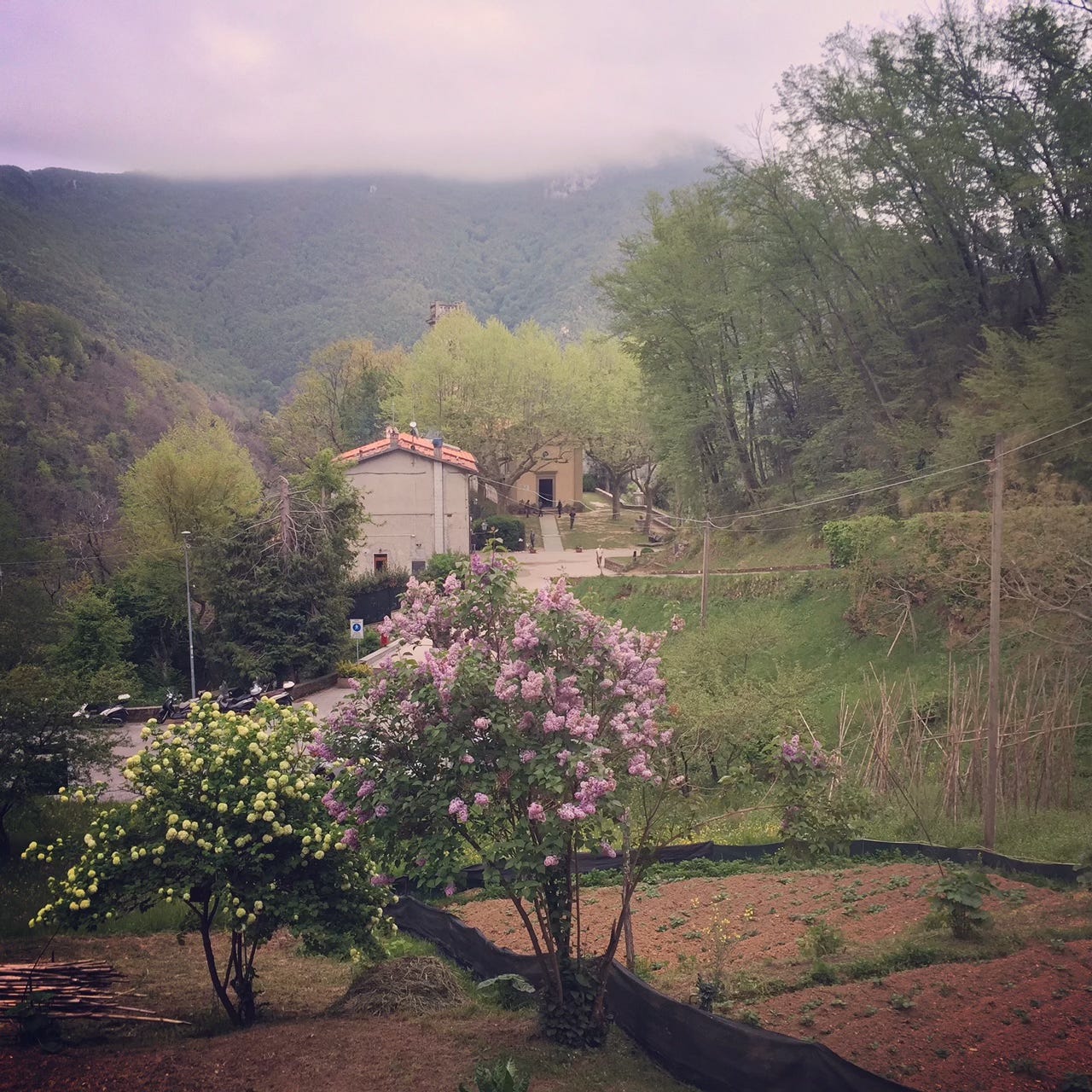
Thank you for sharing this very touching story.
So many horror stories during WW2
How appalling is this one.... massacres and wars still happening around the world....the human race may destroy our wonderful planet eventually.....but miracles happen. We must look to the future with hope and compassion for everyone.... ❤️